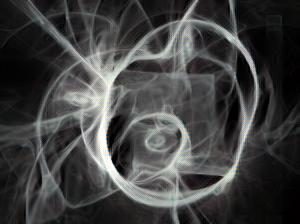- Though multitudinousness of things has no [real] existence as such, they appear to the intoxicated as like fire-flies because of their constitutional disturbance; like-wise is the world essentially [appearance].
Our apparent world is based on intoxication. Enamored with the colorful dance of the vijnanas, the perceiver can be likened unto a drunkard, stumbling about in a maze of uncertainty as to what is truly Real.
- [Cleary]: Just as a magic illusion appears in straw, sticks, and pebbles while the illusion is not actually there, so are phenomena, by nature.
Another masterful illustration of the Lanka’s take on the apparent, making use of the magician-metaphor—yea, it’s all one big conjurers trick. A further illustration is offered from our Lanka-series:
Rabbit horns and Gandharvic Castles in the air; the mind, will and consciousness; the five dharmas and modes of reality; long and short, is and isn’t, I am the walrus, goo goo g’joob, ect—all are nothing more than a magician’s conjuring trick, designed to keep the great Ferris Wheel of Samsara turning round and round. Red Pine states, “Just as a magician fabricates forms that people imagine as being what they are not, thus does our repository consciousness produce our world of objects as well as our sensory bodies, both of which we imagine to be real, out of the seeds of habit-energy from past discriminations that we once more imagine as being what they are not.” Interesting take on how the defiled seeds of the alaya vijnana, if stirred into motion, create our apparent reality as such–thus initiating that magical mystery tour. One continuous action that dependently originates from all the accumulated habit-energy since time immemorial; as the Lanka itself expounds, “it is based on a dependent reality that the myriad projections of an imagined reality arise—the myriad projections of appearances that are the habit-energy of attachment to projections.”
Thomas Clearly nicely combines numbers 31 & 32: There is no grasper and no grasped, no one to be bound and no bondage, like an illusion, a mirage, a dream scene, a partial blindness; when a seeker of truth sees without false imagination, without embellishment, then, discipline accomplished, one will see me, without doubt. For nothing is represented here, like a mirage in the sky; when conscious of phenomena thus, one does not assert anything.
When the seeker of truth becomes aware of the mirage of this burning-house known as samsara, then one (being blessed by the Buddhas) can see the Dharmadhatu (the truly Real) through the lens of the Tathagatas own Amala-vjinana, or undivided awakened consciousness. As Suzuki’s translation rightly asserts, then he is accomplished in his contemplation—Contemplating the Unborn and No-thing else. In essence, vomiting-up the phenomenal-realm.
- In this there is nothing of thought-construction; it is like a mirage in the air; those who thus see all things, see nothing whatever.
Interesting twist concerning the muscles of perception. Once the mirror is cleansed empowering one to see with that transcendent and enlightened consciousness of Bodhicitta, then one no longer sees with samsaric-eyes—the apparent phenomenal world becomes like one giant blank-canvas.
- In causation which governs being and non-being things do not originate; in the triple world the mind is perturbed, therefore multiplicities appear.
The triple-world here is known in Buddhism as the triloka: Desire Realm (kāma-loka), the Form Realm (rūpa-loka), and the Formless Realm (ārūpya-loka).
Human beings live in the Desire Realm, the lowest of the three, and they (along with other denizens of the *six realms of rebirth) are reborn here because they are still subject to *desire. In the Form Realm there is no desire but corporeality remains, and in the Formless realm there is neither desire nor corporeality. Access from one world to another is by two methods: by being reborn there in accordance with one’s *karma, or through the meditational practice of the *dhyānas. These worlds are alternatively known as realms (*dhātu) or spheres (avacara), thus *kāma-dhātu, kāma-avacara, etc.
Keown, Damien. A Dictionary of Buddhism (p. 309). Oxford University Press. Kindle Edition.
- The world is the same as in a dream, and so are the multiplicities of things in it; [the wise] see property, touch death, a world-teacher, and work as of the same nature.
The multiplicities of all things in the phenomenal world share the same [inadequate] nature: self-emptiness. Truly non-lasting, insubstantial.

